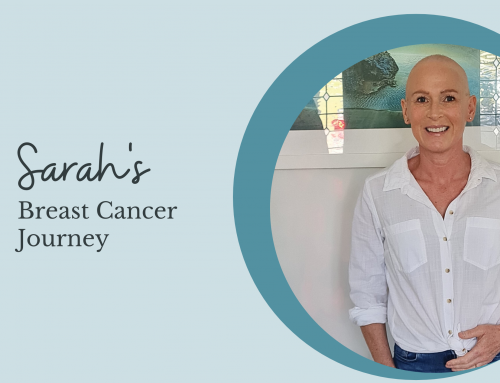For many individuals, osteoporosis is a silent threat lurking beneath the surface, capable of causing fractures and debilitating complications. Yet, recent research suggests that a powerful ally may lie in an unexpected place: the weight room. Contrary to long-standing beliefs, lifting heavy weights could be the key to strengthening bones and preventing the adverse effects of osteoporosis. Let’s dive into this groundbreaking approach and explore how you can kickstart your journey toward stronger, more resilient bones.
Redefining Exercise: The Case for Heavy Weightlifting
For decades, the prevailing advice for individuals with osteoporosis revolved around gentle exercises – cautious and low-impact activities like walking, dancing, non-strenuous aerobics, and gardening. All of these recommendations were based on the idea of reducing the chances of falling and accidentally fracturing a bone. However, recent research spearheaded by experts like Belinda Beck has upended this paradigm, advocating for a more robust approach centred around heavy weightlifting.
The premise is simple yet revolutionary: bone responds to stress by becoming stronger, and heavy weightlifting provides the ideal stimulus to trigger this adaptive response in the body. Unlike lighter exercises that merely help to maintain existing bone density, heavy weightlifting has demonstrated unparalleled efficacy in stimulating bone remineralization. This process not only halts bone loss but actively fosters the regeneration of new, healthier bone tissue, presenting a compelling solution for individuals grappling with osteoporosis.
The Science Behind Heavy Weightlifting:
When we lift heavy weights, something remarkable happens within our bones. They respond by becoming stronger, thanks to a cascade of cellular reactions triggered by the stress of weightlifting. This process not only stops bone loss but also encourages the growth of new, healthier bone tissue.
This remarkable mechanism lies within the bones themselves. When subjected to heavy loads, bones undergo microscopic deformation, setting off a cascade of cellular responses aimed at fortifying their structure. This process involves the displacement of fluid within the bone channels, which in turn activates specialised cells called osteocytes. These osteocytes then send signals to osteoblasts, prompting them to deposit new bone tissue. This intricate dance of cellular activity is instrumental in enhancing bone density and resilience, crucial factors in maintaining skeletal health.
Belinda Beck’s pioneering research underscores the transformative impact of heavy weightlifting on bone health. Her landmark study, which compared low-intensity exercises to supervised weightlifting, revealed compelling results: participants in the weightlifting group experienced significant increases in spine bone density, while their counterparts continued to experience bone loss. These findings underscore the potent dual effect of heavy weightlifting: not only does it halt the progression of bone loss, but it also stimulates the regeneration of new bone tissue — a crucial aspect of osteoporosis management.
Data from Beck’s Study on the benefits of high-impact training
In 2013, Professor Belinda Beck embarked on a groundbreaking study to investigate the benefits of high-intensity resistance and impact training for bone health. Recognising the critical need for bone adaptation, she recruited 101 individuals over the age of 65, with low to very low bone mass, including almost half diagnosed with osteoporosis.
The study, a randomised control trial, divided participants into two groups: one engaged in low-intensity supervised exercise, a protocol commonly recommended by doctors, while the other group underwent heavier, supervised weightlifting sessions. Understanding that bone remineralisation is a gradual process, the study spanned eight months.
The results were remarkable. Participants in the heavy weightlifting group experienced significant increases in spinal bone density, contrasting with the continued bone loss observed in the low-intensity exercise group. Professor Beck’s findings unequivocally demonstrated that low-intensity exercise falls short in building bone, whereas high-intensity weightlifting proves effective.
Moreover, improvements in other physical criteria associated with decreased fracture risk were noted in the heavy weightlifting group, further highlighting its multifaceted benefits. This reduction in fracture risk underscores the pivotal role of heavy weightlifting not only in bone strengthening but also in fall prevention.
Building Bone Health at Every Age
While osteoporosis primarily affects older individuals, the seeds of bone health are sown much earlier in life. It’s essential to recognise that there’s a limited window during which we can positively impact our peak bone mass. The optimal time for building bone density is during periods of rapid growth, such as childhood, adolescence, and early adulthood. During these critical stages, diet and exercise can significantly enhance peak bone mass. Conversely, certain lifestyle choices, including smoking, poor nutrition, inactivity, and excessive alcohol intake, can diminish peak bone mass.
Most individuals reach their peak bone mass between the ages of 25 and 30. However, after age 40, there is a gradual decline in bone mass. Despite this natural ageing process, steps can be taken to mitigate severe bone loss over time. Preemptive measures like weightlifting play pivotal roles in slowing down bone loss and maintaining bone health as we age.
The Role of Exercise Physiologists in Cancer Recovery
Navigating cancer treatment and recovery can be an incredibly challenging journey, both physically and emotionally. During this time, the thought of starting or maintaining an exercise routine may feel overwhelming for many individuals. This is where exercise physiologists step in, playing a crucial role in providing support and guidance tailored to specific health needs, including those related to cancer recovery. These dedicated professionals specialise in creating individualised exercise programs designed to address the unique challenges faced by cancer patients and survivors.
While the idea of weightlifting may initially seem daunting, especially amidst the complexities of cancer treatment, research suggests its potential benefits in promoting physical well-being and aiding in recovery. Dr. Andrew Hill, a respected figure in oncology rehabilitation, highlights the importance of proper supervision and guidance when incorporating weightlifting exercises into an exercise regimen during and after cancer treatment. By integrating weightlifting into a tailored exercise plan, individuals can potentially mitigate some of the adverse effects of treatment, such as muscle loss, fatigue, and decreased mobility, while preserving muscle strength and overall physical function.
At the Tasman Health Care gym, our experienced exercise physiologist understands the unique challenges and concerns faced by individuals undergoing cancer treatment. We work closely with patients to develop personalised exercise plans that prioritise safety, comfort, and effectiveness. Whether you’re in the midst of treatment or transitioning into survivorship, our team at Tasman Health Care gym are here to provide guidance, support, and encouragement every step of the way.
To make an appointment, contact our reception team at 07 5613 2480 during our operating hours from 8:30am to 4:00pm.
Conclusion: Forging a Path Towards Bone Resilience
In our quest to battle osteoporosis, we’ve stumbled upon a surprising solution: weightlifting. Contrary to what we’ve been told, lifting heavy weights isn’t just for bodybuilders—it’s for anyone looking to strengthen their bones and fend off the effects of osteoporosis.
Professor Belinda Beck’s groundbreaking study demonstrated the power of heavy weightlifting. Participants who engaged in high-intensity resistance training saw significant increases in spinal bone density, while those sticking to lighter exercises continued to experience bone loss. This tells us that heavy weightlifting isn’t just effective—it’s essential for building and maintaining strong bones.
But bone health isn’t just about lifting weights—it’s a journey that starts early and continues throughout life. By focusing on activities that strengthen bones during periods of growth and making smart lifestyle choices, like eating well and staying active, we can set ourselves up for a lifetime of bone resilience.
So, whether you’re in your twenties or your seventies, it’s never too late to start lifting weights and investing in your bone health. With each lift, you’re not just building muscles—you’re building a stronger, more resilient future for yourself.
References:
- Lifting heavy weights can help you mitigate osteoporosis. Here’s how to get started.
- High-Intensity Resistance and Impact Training Improves Bone Mineral Density and Physical Function in Postmenopausal Women With Osteopenia and Osteoporosis: The LIFTMOR Randomized Controlled Trial
- Healthy Bones at Every Age
Please be advised that this advice is of a general nature only and you should always consult your Doctor for information regarding your own individual treatment.
To make an appointment with one of our Doctors, Genetic Counsellors or team of Allied Health Specialists please contact us (07) 5613 2480 or reception@tasmanhealthcare.com.au.







